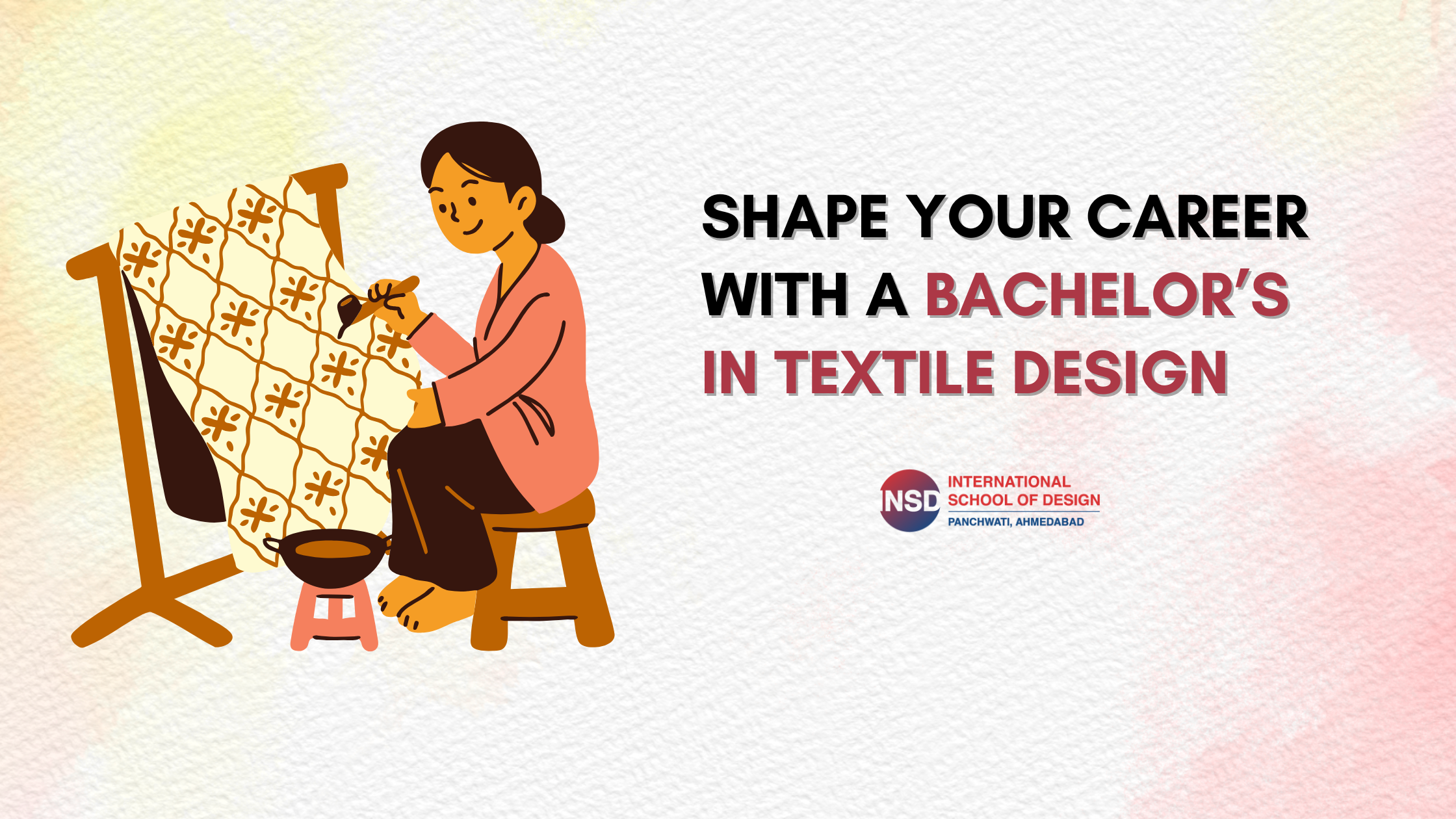When you hold a beautifully crafted garment in your hands, you’re not just admiring a piece of fashion; you’re appreciating the intricate artistry of textile design. The texture, the pattern, the fabric’s weight—all reflect the creativity and craftsmanship behind it. If you’ve ever found yourself fascinated by fabrics, colors, or how prints come to life, chances are you’re already drawn to the world of textile designing.
Turning that creative instinct into a future-ready profession starts with the right education. And that’s exactly what a Bachelor’s in Textile Design offers—a comprehensive, hands-on journey into one of the most influential areas of the design industry.
Textile Design: The Creative Core of Fashion
Every iconic fashion collection starts with a fabric. Textile designers are the ones who breathe life into these fabrics, blending technical skill with artistic imagination. From detailed prints and weaves to experimenting with new materials, textile design is where fashion begins.
A Bachelor’s degree in this field equips you with practical skills in fabric construction, dyeing, surface ornamentation, and digital design. Institutes like INSD Ahmedabad provide industry-relevant training, ensuring you don’t just gain theoretical knowledge, but also know how to apply it in real-world design studios, mills, and fashion houses. It’s a balanced mix of craft, innovation, and technology—all of which are crucial for today’s design landscape.
Why This Degree Makes a Difference
Today, the design industry is evolving fast—and textile design is right at the center of that change. Fashion brands are rethinking their materials, exploring sustainable alternatives, and incorporating smart fabrics into their collections. As a textile designer, you’re not just part of the trend—you help shape it.
A Bachelor’s in Textile Design gives you a strong foundation in both traditional processes like block printing or weaving and modern advancements like digital textile printing and fabric engineering. At institutions like INSD Ahmedabad, students also work closely on industry briefs and live projects, gaining insights into what the market actually demands.
This approach ensures that by the time you graduate, you’re ready to contribute meaningfully to fashion, interiors, or any sector that relies on fabric innovation.
Career Possibilities Beyond the Fashion Ramp
While fashion design is often the most obvious career path, the scope of textile design extends far beyond it. Think home furnishings, lifestyle products, automotive textiles, performance wear, or even wearable tech. Textile designers also work in product development, print design, sourcing, and research.
Whether your dream is to create for luxury brands, launch your own label, or work on sustainable design solutions, a Bachelor’s in Textile Design opens doors across the creative economy. And with growing awareness around eco-friendly materials and artisanal techniques, there’s a renewed appreciation for designers who understand fabrics deeply and think ahead.
Conclusion: A Fabric-Focused Future Starts Here
If you’re someone who enjoys working with materials, loves patterns and textures, and wants a career that blends creativity with technical depth, a Bachelor’s in Textile Design is your way forward. It helps you build a strong base, not just in the art of design, but also in understanding what the future of fashion and material innovation looks like.
Institutes like INSD Ahmedabad offer a thoughtfully designed curriculum that prepares students for real opportunities in fashion and beyond. Whether you see yourself working with established brands or starting something of your own, the knowledge and skills you gain here will help you move forward with confidence.
Because when you understand the language of fabrics, you’re not just designing—you’re building the future of design.
FAQ: Bachelor’s in Textile Design
Why is textile design important in fashion design?
Textile design defines the material foundation of any fashion piece. It directly influences how a garment looks, feels, and behaves, making it essential in the fashion design process.
Can a textile designer become a fashion designer?
Yes, many professionals begin their journey in textile design and transition into fashion design. Their strong understanding of materials and construction gives them an edge in creating impactful collections.
How is textile related to fashion?
Textiles are at the heart of fashion—they set the tone for silhouettes, colors, textures, and even functionality. A garment’s success often starts with the fabric choice and treatment.
Curious to know more about the Bachelor’s in Textile Design at INSD Ahmedabad?
We’re here to help! Reach out with your questions—we’d be happy to guide you as you take the first step toward a creative and meaningful design career.



